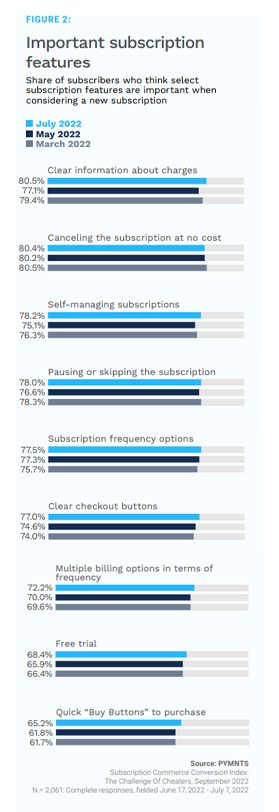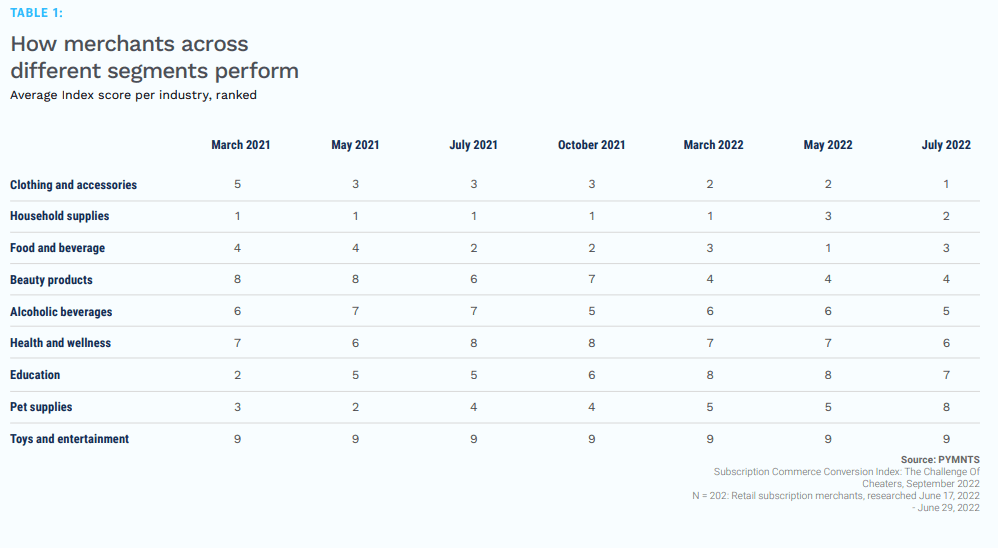Subscription Merchants Battle Churn With Value and New Features

The evolution of subscription commerce continues as consumers become more demanding and exacting in what they want — and expect — from monthly retail boxes. It’s a shift that has seen brands reducing friction, adjusting offerings, and generally being more responsive to customer needs in a bid to keep satisfaction high and churn low in a tough market.
“We’re seeing more and more membership rewards. We’re seeing soft rebates, credits towards other products, or discounts to other offers,” Brian Bogosian, president and CEO of subscription commerce platform sticky.io told PYMNTS in a recent round-table discussion.
“We’re seeing this whole idea of bundling and upselling, discounting, pricing, and the flexibility of subscription being a big tool for merchants to utilize in extending customer lifetime value and providing value to consumers to keep them in,” he added, noting the particular challenges that so-called non-essential items face in the present environment.

The Struggle is Real
According to data from the Subscription Commerce Conversion Index, a PYMNTS and sticky.io collaboration, where the two latest quarterly reports in this long-running series show how price and convenience — practical considerations — are edging out the novelty factor.
PYMNTS measures subscription satisfaction on a matrix of points, and 2022 has seen brands embracing convenience and value as a measure of price rewarded with higher index scores.
In September, the Subscription Commerce Conversion Index: The Challenge Of Cheaters, notes that “merchants broadly continued to improve the subscription experiences they offer, with the overall Index average climbing to 49 in July, 2.1% above the level we measured in May and 7.9% over that of March.”
Who benefitted most? Clothing and accessories made a comeback in the September index retaking the top spot after an up-and-down year, followed by household supplies, which have held the number one rank more consistently than any category, but not without fluctuations.
Per that edition, “data shows that transparency surrounding charges is the most common feature subscribers want: 81% of subscribers considering a retail product subscription say this is very or extremely important to making them feel comfortable. No-cost cancellations and the ability to pause subscriptions come close behind, as 80% say the former is important and 78% say the same about the latter.”
Get the Study: Subscription Commerce Conversion Index: The Challenge Of Cheaters
From Value to Involuntary Churn
As their materials and operating costs rise, subscription services are tempted to pass those hikes onto consumers. That might fly in better times, but not in 2022.
Consider recent news from leading delivery aggregator DoorDash, which despite the high costs of gas and food said it would not raise rates on its DashPass. During a Nov. 3 earnings call, CFO Prabir Adarkar said “I view an increase in subscription fee or DashPass as being something that would actually slow down the pace of DashPass adoption, which we’ve been very happy with so far.”
See also: Coffee and Flower Brands Push Value to Survive ‘The Great Unsubscribe’
 As retail subscription brands tweak offerings to reduce active churn, the battle against involuntary churn that typically arises from card declines is taking on greater importance.
As retail subscription brands tweak offerings to reduce active churn, the battle against involuntary churn that typically arises from card declines is taking on greater importance.
In a recent interview, Rima Khoury, vice president of engineering at subscription billing and management platform Vindicia, told PYMNTS that “There are a lot of factors that play into the frustration, and part of it is how do you manage all of these from the consumer’s perspective? How do you know how much you’re spending and what subscriptions you need or want versus the ones that you just forgot about?”
Khoury called out involuntary churn as the most preventable, saying “It’s up to the providers to make sure this does not happen. It’s very important to differentiate between voluntary and involuntary churn. Involuntary churn is a huge thing that sometimes providers underestimate and don’t realize the impact of.”
See also: Payment Declines Are the ‘Silent Killer’ of Subscriber Lifetime Value
FlexPay Founder and CEO Darryl Hicks is on the same page, saying in a PYMNTS interview that “You need to get the right people around the room to start to measure what’s actually going on. A question as simple as, ‘Of our churn, how much of it is voluntary versus involuntary? How much of it is passive versus active?’ That alone can be very telling,” he said, pointing to research that found nearly half of all churn in the U.S. was the result of failed payments.
For all PYMNTS retail coverage, subscribe to the daily Retail Newsletter.
